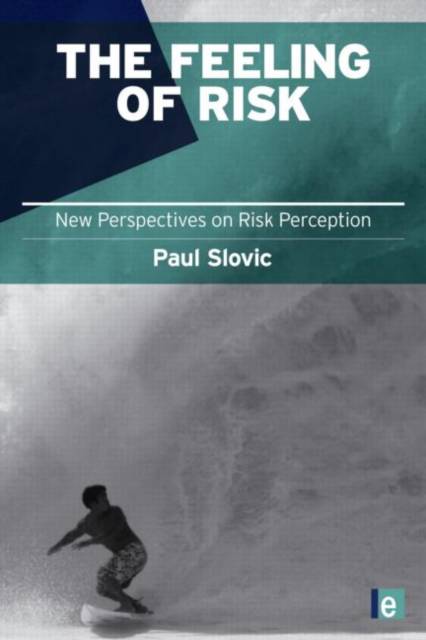
- Retrait gratuit dans votre magasin Club
- 7.000.000 titres dans notre catalogue
- Payer en toute sécurité
- Toujours un magasin près de chez vous
- Retrait gratuit dans votre magasin Club
- 7.000.0000 titres dans notre catalogue
- Payer en toute sécurité
- Toujours un magasin près de chez vous
Description
The Feeling of Risk brings together the work of Paul Slovic, one of the world's leading analysts of risk, to describe the extension of risk perception research into the first decade of this new century.
In this collection of important works, Paul Slovic explores the conception of 'risk as feelings' and examines the interaction of feeling and cognition in the perception of risk. He also examines the elements of knowledge, cognitive skill, and communication necessary for good decisions in the face of risk.
The first section of the book looks at the difficulty of understanding risk without an emotional component, for example that disaster statistics lack emotion and thus fail to convey the true meaning of disasters and fail to motivate proper action to prevent them. The book also highlights other important perspectives on risk arising from cultural worldviews and concerns about specific hazards pertaining to blood transfusion, biotechnology, prescription drugs, smoking, terrorism, and nanotechnology.
Following on from The Perception of Risk (2000), this book presents some of the most significant research on risk perception in recent years, providing essential lessons for all those involved in risk perception and communication.
Spécifications
Parties prenantes
- Auteur(s) :
- Editeur:
Contenu
- Nombre de pages :
- 456
- Langue:
- Anglais
- Collection :
Caractéristiques
- EAN:
- 9781849711487
- Date de parution :
- 03-09-10
- Format:
- Livre broché
- Format numérique:
- Trade paperback (VS)
- Dimensions :
- 152 mm x 231 mm
- Poids :
- 703 g

Les avis
Nous publions uniquement les avis qui respectent les conditions requises. Consultez nos conditions pour les avis.






